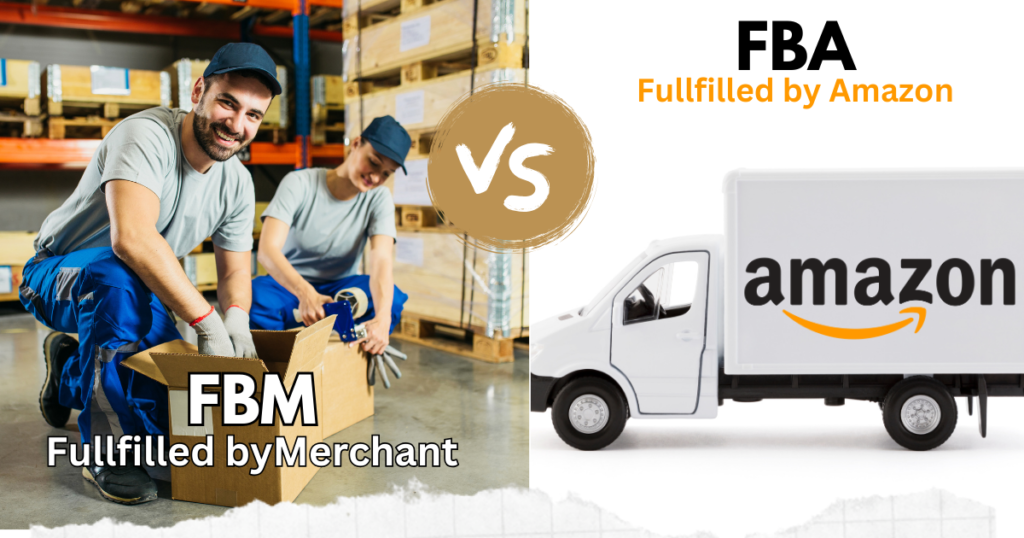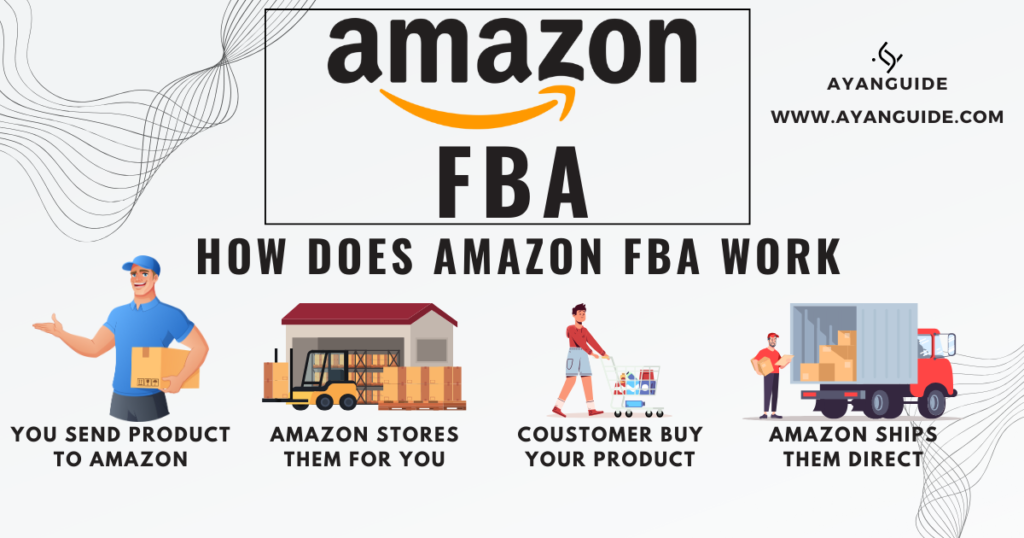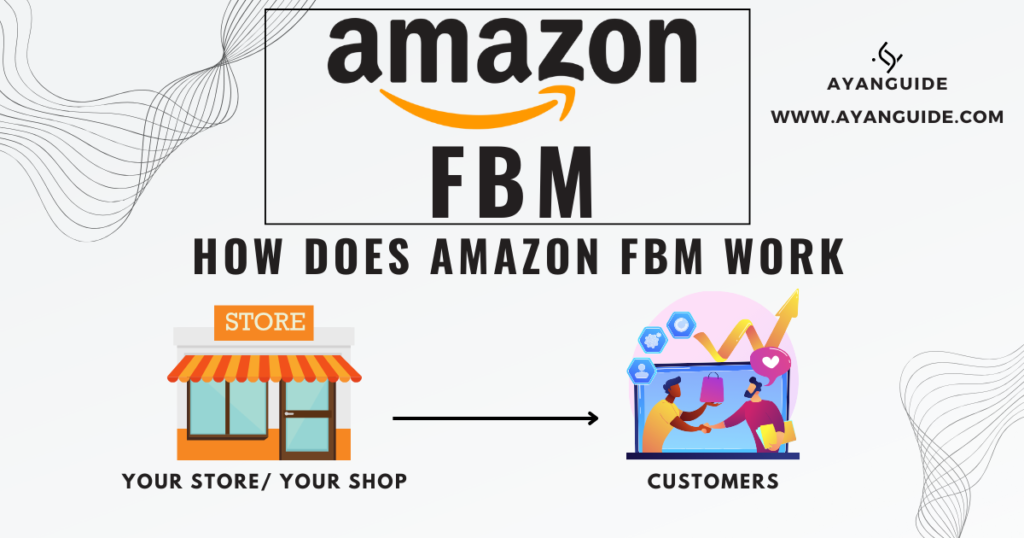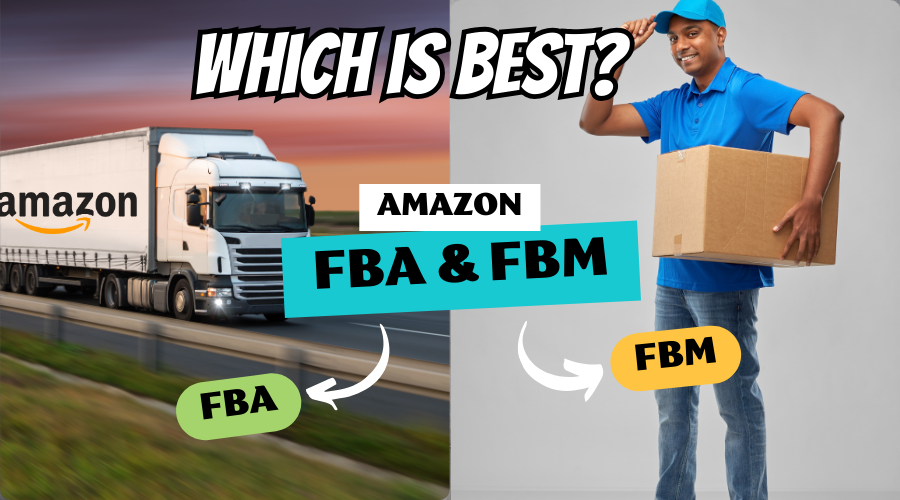Introduction: Understanding Amazon FBA and FBM

How FBA and FBM Work for Your Amazon Success?
From the world of the Amazon business, where Fulfillment by Merchant (FBM) and Fulfillment by Amazon (FBA) establish regulations and salutations. You may purchase hands-free thanks to FBA since Amazon takes care of the shipping, packaging, and storage. On the other hand, you have complete control using fulfillment process management (FBM).
In this inquiry, we will analyze the special qualities of FBA and FBM to help you realize the principles that dictate your achievement on the wide e-commerce network. Follow along as we assist you in knowing the complex details of Amazon’s fulfillment environment so that you can decide on actions that are specific to your seller strategy.
How Does Amazon FBA Work?

Creating Your FBA Account
Registering as an Amazon seller and selecting the FBA program are the first steps in getting started with Amazon FBA. After enrolling, businesses can use Amazon’s huge fulfillment network.
Amazon Receiving Inventory
Arriving at one of Amazon’s fulfillment centers are vendor shipments. The stock is kept here until a consumer places an order. This makes delivery easier and prevents merchants from worrying about storage problems.
Shipment and Order Processing
Amazon handles every aspect of order fulfillment after a customer puts an order. This covers selecting, packaging, and delivering the item to the client. Amazon’s logistics network operates with efficiency, guaranteeing prompt and dependable delivery.
Customer Service and Returns Handling
Customer service is another aspect of FBA in addition to shipment. For the benefit of both sellers and customers, Amazon takes care of consumer inquiries and returns, making the process simple.
Absolute Advantages and Purchase Box Eligibility
One major advantage in drawing customers is that products supplied by Amazon are frequently qualified for Amazon Prime. A seller’s chances of obtaining the Buy Box, the much sought-after top spot on an item’s page, are also improved by FBA.
How Does Amazon FBM Work?

Managing Your Satisfaction
Sellers who utilize Fulfillment by Merchant (FBM) maintain command over their fulfillment procedures and inventory. Transport scheduling, product storage, order selection, and packing fall within their responsibility.
Building Your Shipping System
Sellers who use FBM must set up a shipping network or collaborate with reputable carriers. More control over delivery schedules and transportation costs is made possible by this flexibility.
Direct Customer Interaction
FBM sellers directly interact with customers regarding order status, shipping inquiries, and returns. This direct engagement can be advantageous for building a personalized relationship with buyers.
Cost Considerations
While FBM offers more control, sellers bear the costs associated with storage, shipping, and customer service. This model may be more suitable for those with a well-established logistics infrastructure.
Choosing Between FBA and FBM

– Factors Influencing the Choice
The choice between FBM and FBA is influenced by several variables. For sellers prioritizing convenience, scalability, and Prime eligibility, FBA might be the preferred choice. FBM is suitable for those with a robust fulfillment infrastructure seeking more control over costs and customer interactions.
– Hybrid Approach: Amazon FBM and FBA
Some sellers adopt a hybrid strategy, using both FBA and FBM for different products. This allows them to balance the advantages of both models based on individual product characteristics and business goals.
e-commerce strategy. Whether you choose the hands-free convenience of FBA or the hands-on control of FBM, understanding how each works enables you to tailor your approach to fit your business needs.
Tips for Success with FBA and FBM

Optimize Your Listings:
To improve your product listings, make use of compelling product titles, thorough descriptions, and excellent photos. This holds for both FBA and FBM since enhanced listings increase exposure and draw in more users.
Strategic Pricing:
Evaluate your pricing strategy considering fulfillment costs, shipping, and Amazon fees. Factor in the potential for winning the Buy Box with FBA and the flexibility to adjust prices dynamically with FBM.
Inventory Management:
Stay vigilant about inventory levels. FBA automates much of this process, but FBM sellers must actively manage stock to avoid stockouts or overstock situations.
Utilize Amazon Advertising:
Use Amazon Advertising to increase product visibility regardless of the fulfillment method. Your product’s visibility in search results can be improved with sponsored product promotions.
Monitor Customer Feedback:
Customer reviews matter. Regularly check feedback and reviews to understand customer sentiments. Address any issues promptly to maintain a positive seller reputation.
Leverage Prime Day and Special Events:
Take advantage of Prime Day and other unique Amazon events to profit from an increase in customer traffic. Make sure your promos are carefully thought out and your stock is well-stocked.
Stay Informed About Policy Changes:
Both FBA and FBM sellers should stay updated on any policy changes or updates from Amazon. Compliance with policies is crucial to maintaining a healthy seller account.
Conclusion:
It’s important to choose between FBA and FBM in the dynamic world of Amazon sales. Every model has benefits, and the ideal option will rely on your preferences, available funds, and professional objectives. Succeeding in Amazon‘s ever-changing marketplace requires strategic planning and persistence, whether you choose to use FBA effectively or not. the fifth management of SMBs.

